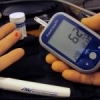Search the Community
Showing results for tags 'oxygen'.
-
I'm learning to become an EMT, so be easy on me for asking this newbie question, but it points to something about O2 adminstration that I don't understand. Virginia's health department posts a bunch of scenarios for EMT training like this one: http://www.vdh.virginia.gov/content/uploads/si...
-
Hi Guys, Ebay has brand new empty CGA 870 D tanks for around 50 bucks shipped. I am going to buy one for my home emergency kit. ( you never know, love thy neighbor and etc ) I have an EMT-B cert. I have never filled a tank before. Where in or near New York City can I have a personal D tank...
-
You are called to the lake to meet a patient coming in on a boat who is having difficulty breathing. When you arrive, the boat has just docked and friends are removing the patient from the boat. When you do your history, you find that this 30-year-old female was scuba diving in 65 feet of water when...
- 2 replies
-
- oxygen
- pneumothorax
-
(and 2 more)
Tagged with:

